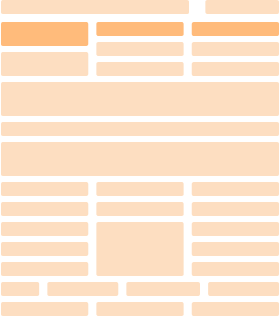How to Write Off Unpaid Invoices and Improve Your Cash Flow

May 21, 2025
Knowing how to write off unpaid invoices can help you mitigate losses and minimize the disruption these outstanding payments have on your cash flow and business. Since unpaid invoices are an unfortunate reality for many professionals, handling them in the best way possible is critical in maintaining your financial health.
This article explores what it means to write off an unpaid invoice, explains when that’s possible, teaches you how to do it, and discusses tax implications. We’ll also show you how to manage your invoices and use Paystub.org to avoid unpaid invoices in the first place. Let’s get started!
Key Takeaways
- Writing off an unpaid invoice means removing it from your accounts receivable and accepting that you won’t get paid for the goods sold or services provided.
- Invoice write-off helps businesses gain tax deductions if they use an accrual accounting method and have already reported them as income on their tax return.
- There are many reasons why clients don’t pay invoices, including internal financial struggles, disputes, poor follow-up procedures, and incorrect invoices.
- Using an invoice generator, like the one at Paystub.org, enhances your record-keeping and increases your chances of getting paid.
What Does It Mean to Write Off an Unpaid Invoice
Writing off an unpaid invoice means recognizing that an outstanding invoice won’t be paid at all and removing it from your accounts receivable. In essence, it means that you’ve given up on collecting the debt and don’t expect the client to pay for the goods you’ve sold them or the services rendered.
However, it’s important to understand the difference between a bad debt and a simple uncollected invoice. An uncollected invoice is one that you haven’t been paid for yet, but you’re expecting to. Bad debt is the one that you likely won’t ever be able to collect, and you’ll have to write it off.
Writing off an invoice becomes necessary after you’ve tried every invoice collection strategy, and they have yielded no results. You can also reach a point where pursuing debt can become more costly than the value of the debt itself (e.g., a low-value contractor invoice might not be worth the hassle). That’s when it’s more beneficial to write off bad debt and move on.
As a result, recognizing bad debt as soon as possible is essential in preventing even greater losses. Once the debt is written off, you’ll gain a more accurate insight into your financial situation and have more precise data to use in your decision-making.
4 Common Reasons Why Invoices Don’t Get Paid
Before we learn how to write off unpaid invoices, let’s find out why clients don’t pay them in the first place.
#1. Client bankruptcy
Client bankruptcy is among the most common reasons for unpaid bills and invoices. When a professional or business declares bankruptcy, it becomes incapable of repaying most, if not all, of its debt.
Depending on their type of bankruptcy, the debtors can have their assets liquidated to repay portions of their debt to some of the creditors. However, in most cases, this typically doesn’t involve unsecured creditors, which are invoice holders. Also, the court can make it illegal to contact debtors and ask them to pay their invoices.
#2. Disputes over goods/services
Some invoices aren’t paid due to disputes over the goods sold or services provided. A client unsatisfied with the contractor’s work or wares can withhold payment until the issue has been rectified.
If the problem isn’t solved between the involved parties, the situation can escalate into a legal matter. At that point, legal fees, rework, and other costs can outweigh the invoice’s initial value, making writing off bad debt more beneficial than pursuing it further.
#3. Poor follow-up or invoicing processes
In many cases, especially with businesses or professionals with many clients, poor invoice management and no follow-up can result in unpaid invoices. That’s why it’s important to send overdue invoice letters or have automated systems in place that remind and urge the clients to pay.
Moreover, sending invoices late, to the wrong persons or departments, or without clear payment instructions can all result in missed payments and bad debt accumulating.
#4. Mistakes in the invoice itself
Mistakes in the invoice can lead to delayed payments or even non-payment. Some of the most common mistakes include wrong rates, incorrect sums, mistyped client details, vague descriptions of goods or services, and unspecified invoice due dates.
Many clients have strict policies when it comes to paying invoices, and uncertainties can lead to delays or disputes. While these mistakes can be corrected, it’s important not to repeat them, as they can lead to uncollected payments and even a degraded business reputation.
How to Know If You Can Write Off an Invoice? 3 Criteria
Writing off an unpaid invoice is not an arbitrary process, as three criteria need to be fulfilled. Before you can claim a tax deduction for unpaid invoices, you need to answer these three questions:
- Have you taken every reasonable step to collect the debt? Before you can write off an unpaid invoice, you need to demonstrate that you did everything you could to collect the payment. You need to have proof that you’ve contacted the client, sent reminders, and even contacted collection agencies or attorneys for third-party assistance.
- Is the debt truly worthless, as there is no chance it will be paid? You can’t use any uncollected invoices as financial write-offs if there are still chances you can get paid. There needs to be reasonable evidence that you’ll never be able to recover the payment (e.g., the debtor could’ve gone bankrupt, or they may have disappeared).
- Have you included the amount you want to write off on your tax return? This part is critical for tax deductibility. If you’re using the accrual method of accounting, and you’ve already reported the income from the invoice on your tax return, you can deduct it as bad debt. However, you can’t do this if you’re using cash-based accounting.
How to Write Off an Unpaid Invoice in 4 Steps
Now that you understand what it means to write off an unpaid invoice, here’s a step-by-step guide on how you can do it.
Step 1: Try the final follow-up or collections
Before officially writing off an unpaid invoice, you should try to collect it one last time. For instance, you can send a final overdue invoice letter sternly and professionally or contact an attorney to send a demand letter.
If it’s a larger sum, you can hire a debt recovery agency or try to find a compromise with the client by offering more favorable payment options. Sometimes, these final pushes can yield surprising results and prevent you from having to write off the debt.
Still, it’s essential to document these efforts even if they are unsuccessful, since they will be used as proof for a tax write-off.
Step 2: Decide if it's a bad debt
If your final follow-up or collection attempts fail, you should officially classify the uncollected payment as bad debt. In general, you should have established policies surrounding invoice write-offs.
The policies can describe specific timelines (e.g., you can deem an invoice eligible for a write-off when it’s been overdue for more than 120 days) or trigger during particular circumstances (e.g., a client has gone bankrupt).
Clear policies ensure a consistent approach to writing off unpaid invoices, enhancing financial stability. Plus, they can help during audits by strengthening your case.
Step 3: Adjust your accounting records
The key process in writing off unpaid invoices is adjusting your accounting records to reflect the new state of your finances. If you use the accrual accounting method, you’ll remove the invoice amount from your accounts receivable and write it off as bad debt.
When adjusting your journal entry, you will debit a bad debt expense account while crediting the accounts receivable.
Based on the size of your business and the number of unpaid invoices you encounter, there are two methods of writing off bad debt:
- Direct write-off. This method is standard for small businesses that encounter fewer unpaid invoices. It involves directly writing off a specific amount as a bad debt expense.
- Allowance method. This method is used by large companies that face many unpaid invoices. It involves setting up a reserve account and proactively estimating bad debt expense at the end of the fiscal year.
Step 4: Keep documentation
Record-keeping is critical when writing off unpaid invoices. You must keep all the documentation related to the invoice and the process of writing it off.
This includes all types of invoices and their copies, records of communications with clients, documentation detailing collection efforts, and more. Proper documentation is vital for internal record-keeping, but also during tax season and potential audits.
How Writing Off Invoices Affects Your Taxes

Writing off invoices can affect your taxes in specific circumstances. For starters, your business needs to be using the accrual method of accounting. Since this method involves reporting income as you earn it (e.g., when you issue an invoice, even if you haven’t collected the payment yet), you can potentially pay taxes on income you haven’t realized yet.
In this case, the IRS will allow you to deduct this amount as bad debt, as long as you can prove that you did everything you could to collect it. This deduction will impact your reported income, reducing your tax liability.
However, if you’re using a cash method of accounting, writing off an invoice generally won’t affect your taxes. That’s because your income is reported for tax purposes once you actually get paid. As a result, you typically won’t pay taxes on uncollected debt, so there won’t be any previously taxed income that you’ll be able to reduce.
The IRS has an in-depth guide on bad debt deduction, which describes the debt you can and can’t deduct from your gross income. To learn more about business bad debts and how you may deduct them, you can refer to Publication 334. On the other hand, Publication 550 is related to nonbusiness bad debts.
Alternative Ways of Dealing with Unpaid Invoices
Before you write off unpaid invoices, you should explore other options that could benefit your business financially. Here are three alternatives to consider:
- Negotiate a different payment plan. Before writing off an entire invoice amount, you should contact the client to see if a distinct payment plan suits them. For instance, they might be able to pay in installments over an extended period, or they could pay a portion of the invoice, allowing you to recover some of the funds.
- Contact a collection agency. If you struggle with unpaid invoice accounting or face more than you can handle, you should hire a professional agency that specializes in debt recovery. You can typically pay them a percentage of the amount they successfully recover, allowing you to gain more than you would by writing the invoice off entirely.
- Pursue legal action. If a client owes you a considerable amount and you have reasons to believe they can pay but deliberately aren’t, you can pursue legal action. This is generally a last resort option, where you should hire attorneys to help you. They can send letters of demand or, if needed, file a lawsuit with the small claims or higher court.
3 Ways to Prevent Unpaid Invoices in the Future
The best way to avoid using bad debt as a business write-off is to prevent unpaid invoices from happening in the first place. Here are the three most effective strategies to help you achieve that:
- Create robust contracts and invoices. Your contracts and invoices need to be clear, precise, and informative from the get-go. They need to have every important detail, including payment terms, due dates, penalties for late payments, etc. This helps prevent misunderstandings and repels clients with a history of not paying their invoices.
- Implement strategic invoicing and follow-up procedures. You should send invoices as soon as you’ve completed your services or delivered the goods. Moreover, you should keep track of your invoices and have established policies on when to send payment reminders and what to do if you need to escalate the situation.
- Offer multiple payment options and incentives. Giving clients the flexibility of choice when it comes to paying (e.g., wire transfer, online payment portals, cash) increases the chances of a successful collaboration. On top of that, you can incentivize your clients by offering invoice discounts if they pay early or on time.
How Paystub.org Helps Manage and Reduce Unpaid Invoices

One of the simplest and easiest ways to reduce unpaid invoices is to use the Paystub.org invoice generator. Our platform helps you create robust, detailed, and accurate invoices in minutes, allowing you to enhance your record-keeping and get paid more.
Here’s a step-by-step guide on how to use our generator:
- Select the invoice generator on the main page of our website (note that we also offer a paystub generator, Form W-2 generator, and Form 1099 generator if your business needs them).
- Choose a template that suits your needs and pick a color (e.g., a plumber invoice will likely differ from an actor invoice).
- Fill out the form by putting your details in the provided fields. The tool will show you which fields are mandatory and which ones are optional but allow you to include more details.
- Review your final invoice to see if you need to make changes.
- Check out and download a finished document.
By using our invoice generator, you’ll save a ton of time and effort it takes to create these documents from scratch. On top of that, you’ll get faster payments with fewer unpaid bills while keeping your records clean and organized.
Final Thoughts
Knowing how to write off unpaid invoices is vital for businesses to minimize losses that occur due to non-paying clients. There are many reasons why clients don’t pay their invoices, and knowing what they are, how to prevent them, and how to act if they happen can help you maintain the financial health of your enterprise.
Keep in mind that writing off an unpaid invoice should be the last resort, and you should always negotiate with the client to try to recover at least some of the amount. Finally, don’t forget to give our invoice generator a try. By creating robust and professional invoices, you’ll reduce the chances of non-payment in the first place.
Write off Unpaid Invoices FAQ
#1. Can I write off partial invoice amounts?
Yes, you can write off partial invoice amounts if you’ve been paid portions of them, and the rest is uncollectible. However, you must prove that the debt is truly worthless and that you’ve tried what you can to collect it.
#2. How long should I wait before writing off an invoice?
There is no specified time you should wait before writing off an invoice. Most businesses will wait for at least 90 to 120 days after the due date before considering an invoice write-off. This decision depends on many factors, including the amount, the client, and your relationship with them.
#3. Does writing off an invoice mean the client doesn’t owe anymore?
No, writing off an invoice doesn’t automatically mean the client doesn’t owe anymore. The primary purpose of a write-off is to adjust your financial records and potentially claim tax deductions. Legally, you may still attempt to collect the debt at a later date unless you formally forgive it.


